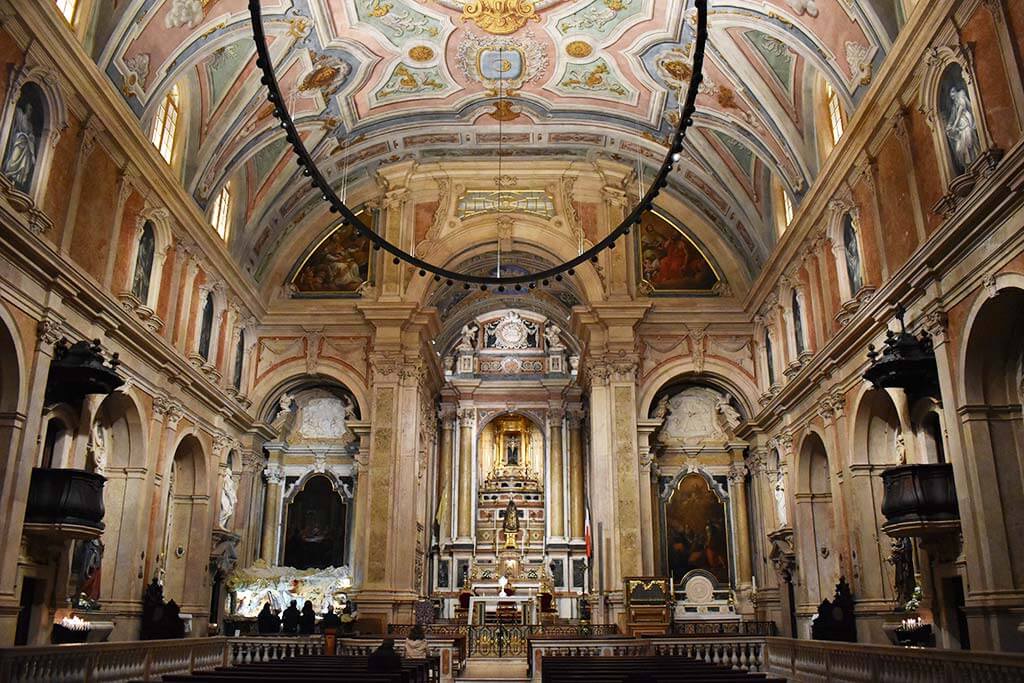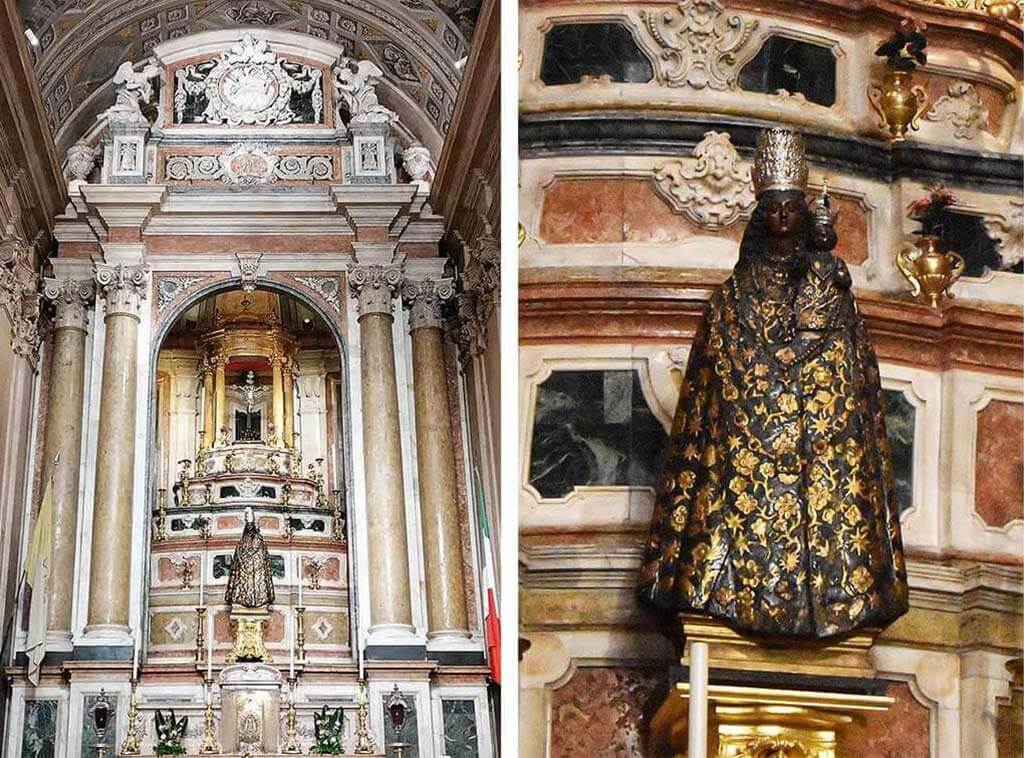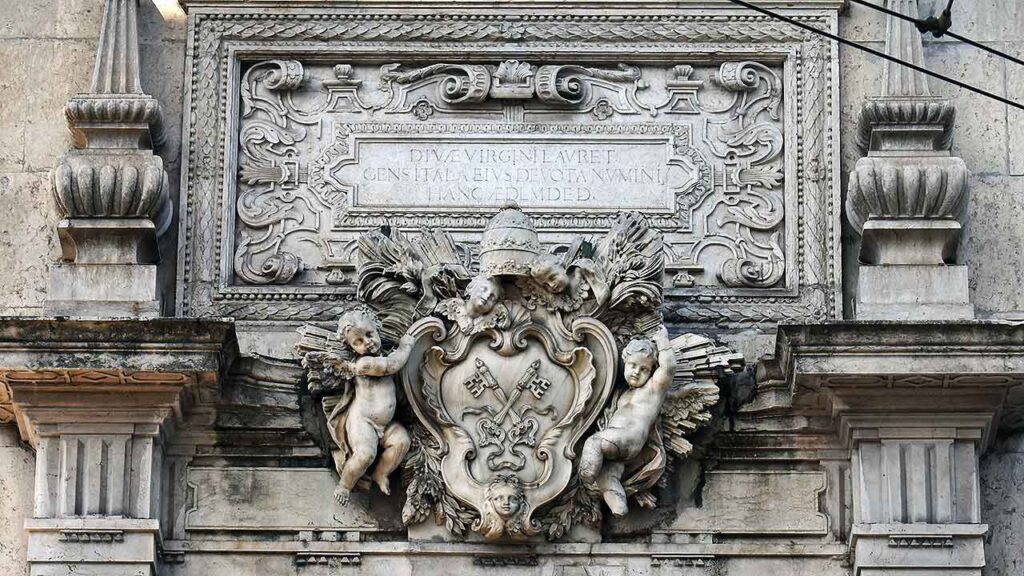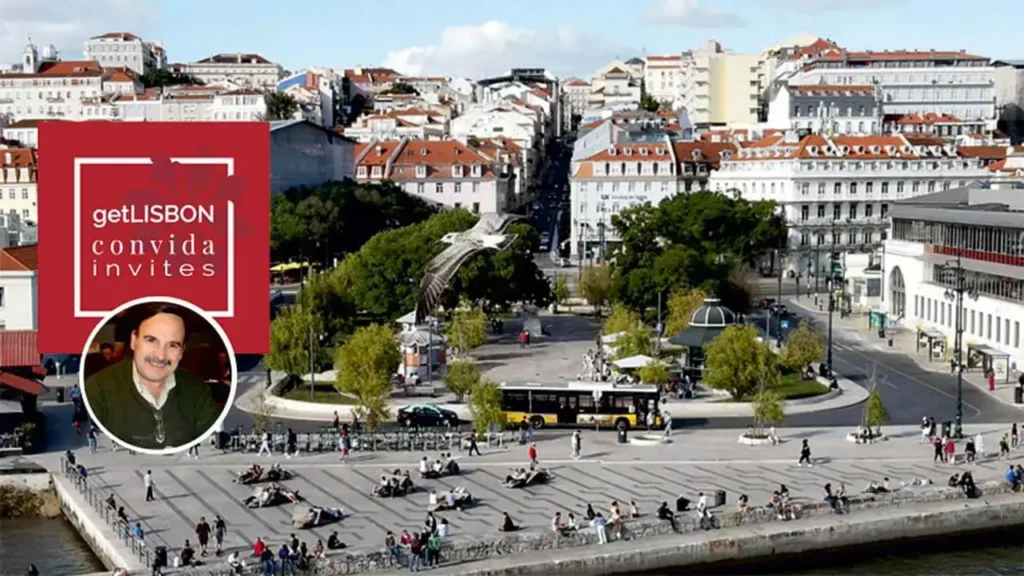It’s a privilege for us to have the participation of the Italian historian based in Portugal, Nunziatella Alessandrini, in the getLISBON invites series. This article covers the Church of Our Lady of Loreto, known as the “Church of Italians“, its foundation in the 16th century by Italian merchants, its location, catastrophes, reconstructions… episodes of its and our history!
The Church of Our Lady of Loreto, known as the “Church of Italians” is a marvellous witness to the presence of Italians in the Portuguese capital since the early 16th century.
Located in the heart of Chiado, a few metres away from Café A Brasileira, continuing down Rua da Misericórdia, the monument has been, since its construction, a focal point for the Italian community in Lisbon, creating a connection among Italians from various city-states of the Italian peninsula.
For the first time, Italian merchants, hailing from a fragmented land, asserted their belonging to an “Italian Nation”, anticipating the unity that would happen more than three centuries later, in 1861.

Italian Merchants in Lisbon in the Early 16th Century
The opening of the maritime route to India brought a significant number of foreign merchants to the Portuguese capital who wanted to take advantage of the new trade with the East, which was expected to be profitable.
Italian merchants actively participated in outfitting ships that, around March-April, left the port of Lisbon for East India. We recall, among others, the Florentine families Marchionni, Sernigi, Giraldi, the Cremonese family Affaitati (“Portugueseized” as Lafetà), the Genoese Lomellini, Centurione, and Spinola.
The intense and increasingly prominent involvement of Italian businessmen in the Portuguese economy made this foreign community aware of its importance. Despite the diversity of origin – considering the political structure of the Italian Peninsula divided into city-states – social status, profession, or different political sensitivities, there was a sense of urgency to gather around their own church. They aimed to establish a confraternity directly dependent on the Holy See of Rome, replacing the devotion to Saint Anthony with devotion to the Virgin of Loreto, whose cult, already ancient in Italy but new in Portugal, reached a strong intensity at that time.
It was noticeable that, outside the Italian Peninsula, Italians established in Lisbon felt part of the same group, although still labelled as Genoese, Milanese, Prazentinos (from Piacenza), Florentines, etc. It was in this sense of belonging to the same Nation that we can identify the reasons that led Italian merchants to decide to build an Italian temple that would be a unifying pole for the Natione Italiana (Italian Nation) and would serve both temporal and spiritual functions.

Construction of the Church of Our Lady of Loreto
Thus, Italian merchants decided to buy land in the parish of Mártires and offered it to the Church of St. John Lateran as a “perpetual and irrevocable donation”, requesting from the Supreme Pontiff, then Leo X, authorization to build a church. They also sought protection and privileges derived from their aggregation to the Lateran Chapter, paying an annual fee of “di mezza libbra di Cera Bianca lavorata” (“half a pound of worked white wax”).
The request to Pope Leo X had a positive response, although the death of the pontiff on April 20, 1518, prevented him from granting the said privileges personally. However, they were confirmed and conferred by his successor Clement VII with a first bull of 1521, followed by another in 1523, approving and placing the Church under his protection and dependence. This established it as the parish for all Italians residing in Lisbon, allowing the construction of a “tower with bells, cemetery, Baptismal Font, and everything else usually granted to parish churches”.
The land on which the church was built “was the ground between the city wall and the barrier, going from the gates of St. Catherine to those of the North, from the first tower near the said Gate to the second, which is level with the houses where they make cannons, in which there is along the said wall twenty-seven and a half fathoms in length, and from the said wall to the wall of Barbacam, three and a half fathoms of strong span.”.
The first tower was the one in front of the main gate and the one that blocked the desired expansion of the church. This led the confreres to request permission from King João III to demolish it. The permission was denied, and only later, with a royal decree of July 10, 1573, issued by King Sebastião, did the Italians manage to fulfil this request.

The “Italian Businessmen” and the Church of Loreto
The construction of the Church of Loreto was supported by Italian businessmen who taxed themselves so that the works would proceed with a quarter of a ducat for every hundred ducats they earned. Nevertheless, the costs of the works were high, and thus, they progressed slowly to the point that, in 1551, the main chapel was still unfinished due to a lack of funds. The intervention of the wealthy Florentine merchant Luca Giraldi was necessary. On March 2, 1551, he stipulated a contract, in the presence of the provider, steward, and other confreres, offering three thousand cruzados in exchange for ownership of the main chapel.
Throughout the centuries, the temple of the Italians suffered significant accidents, notably the fire of 1651 and the earthquake of 1755.
In the fire of 1651, which lasted 45 minutes, “everything in the said Church and treasury” was destroyed – documents from the archive, paintings by Titian, silverware, brocades, and the ceiling made by the architect Filippo Terzi. The Church was rebuilt with the intervention of money from Italian merchants who, two weeks after the fire, gathered and collected 6,000,000 reis.
The second fire that heavily damaged the Church of Loreto was the one following the earthquake of November 1, 1755. The holy oils, the image of Our Lady of Loreto on the main altar, the relic of St. Justin Martyr under the altar, the sacristy, and the archive were saved. Outside, the coat of arms of St. John Lateran above the main gate remained intact.

| Never miss another article | Subscribe here |
Construction of the New Church of Italians
After the earthquake of 1755, the Italians in Lisbon found themselves in a very difficult economic situation, making it impossible to start the reconstruction of the temple immediately. Thus, it was decided that the sacristy would become the “new small church.” The official opening for worship took place on June 5, 1756, and in the meantime, the Italian community was organising itself for the church’s reconstruction. However, the project had to be approved by the competent authority, which arrived on November 18, 1776.
The church was rebuilt with the participation of Italian and Portuguese artists, returning to its former beauty despite the difficulty of replacing pieces from Italy destroyed by the fire, such as the statues of the Apostles, the absence of which was filled by the paintings that are currently there. When entering the Church of Loreto, our eyes are captured by the splendid painting by Pedro Alexandrino de Carvalho, decorating the ceiling of the church since 1780, representing the translation of the Holy House of Nazareth by the angels. The worship of Our Lady of Loreto was at the basis of the construction of the Church of Italians, which, until the unification of Italy, maintained a strong and harmonious union among Italians subjects of the different states of the Italian peninsula.


Nunziatella Alessandrini is a researcher at CHAM (Centre for Humanities) of the School of Social Sciences and Humanities at Nova University Lisbon. Her research focuses on the study of relations between Italy and Portugal in the Modern Age.
Nunziatella has organised 12 cycles of Luso-Italian conferences and authored over 50 articles and 9 co-authored volumes on Luso-Italian relations.
She served as the coordinator for the historical archive rehabilitation project of the Church of Loreto, funded by the Calouste Gulbenkian Foundation (2014-2015), and as the coordinator for the research project funded by the Calouste Gulbenkian Foundation on Marcas de água do acervo documental da Igreja de Nossa Senhora do Loreto, em Lisboa: séculos XVI e XVII.
Nunziatella is Member Associate in the Maritime History Class of the Lisbon Naval Academy and the director of the Historical Archive of the Church of Our Lady of Loreto in Lisbon.
In recognition of her work in the field of relations between Italy and Portugal, she was awarded the title of Ufficiale della Stella D’Italia by the President of the Italian Republic in 2022.




